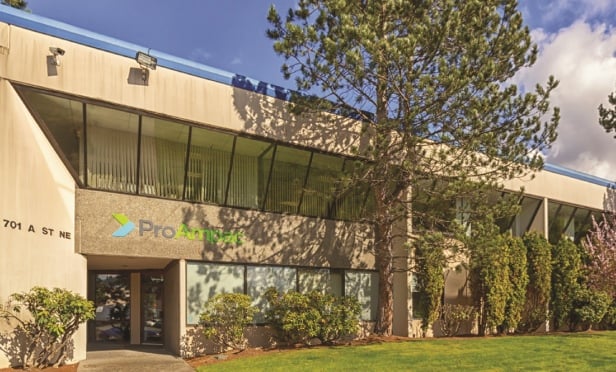Sign up for GlobeSt.com’s NEW Student Housing Leader Email.
LOS ANGELES-In terms of student housing trends, two major things emerging are educational institutions both partnering and competing with private student housing developers for residents, and secondly, most educational institutions now require sustainable/green building features. That is according to Steve Pellegren, VP of preconstruction services for Bernards, who recently chatted with GlobeSt.com on the subject of student housing trends and what’s driving them.
GlobeSt.com: What are some of the newest trends in student housing?
Steve Pellegren: There are two major trends emerging in the student housing arena. First, most educational institutions now require sustainable/green building features. Over the last few years, there have been new student housing projects on a few California campuses including the University of California Merced, Claremont-McKenna College and CAL State Northridge, two of which are LEED Silver Certified projects.
Secondly, educational institutions are both partnering and competing with private student housing developers for residents. Additionally, the top ranked schools are competing for the top students and top professors. Therefore, the current generation of both student and faculty housing looks and feels more like well-appointed apartment projects than traditional campus housing facilities, providing top quality finishes, a rich array of amenities and ample community spaces to promote social interaction.
For example, Bernards is currently providing preconstruction services for a top-ranked university on a $400-million student/faculty residential village. This project is on par with our latest mixed-use project, Americana at Brand, which is a high-end, $267-million residential-retail development in Glendale, CA, by Caruso Affiliated.
All of these new student housing projects are designed to appeal to GenY students, with spaces that promote greater social interaction, including comfortable student lounges and group study areas; meeting, music and recreation rooms; and open spaces for events and recreational uses, such a courtyards, BBQ areas, and exercise facilities, as well as a full array of technology services [internet, WiFi, cable TV and telephone]. The UC Merced project even has its own TV channel, which provides blockbuster movies, information about campus events and educational content.
GlobeSt.com: Are colleges and universities upgrading older student housing facilities, and if so, what’s driving renovations?
Pellegren: Yes, in fact, the Cal State Northridge student housing project was precisely that: an upgrade to replace aging student housing. Existing student housing facilities are being upgraded for two major reasons. In California, older campus facilities of all types are being retrofitted to meet seismic guidelines of both the Federal Emergency Management Agency and California Emergency Management Agency guidelines, as well as upgraded to sustainability standards.
Additionally, student housing is becoming a marketing issue, because the attendees are making decisions about which schools to attend based on quality of campus life, including living accommodations. Therefore, educational institutions are modernizing student housing and adding amenities and technologies that students now expect. For instance, aesthetic upgrades that were completed on two student residence halls at Claremont McKenna College were aimed at supporting competitive student recruitment efforts, with new community living areas, toilet/shower facilities, and new doors throughout.
GlobeSt.com: Could you further explain what you mean by institutions partnering and competing with private student housing developers for student residents?
Pellegren: This is a relatively new market niche that offers opportunities for private developers and investors on and off college and university campuses. The trend developed out of the need for colleges and universities to continue to invest in academic programs during the economic downturn, which left little to no funding for student housing at many higher education institutions, while the need for additional housing increased as the huge GenY population reached college age. Consequently, publicly traded housing REITS have emerged, such as Education Realty Trust, American Campus Communities and Campus Crest Communities. Additionally, market operators are attracting private equity capital for student housing projects. Greystar, Campus Apartments, Capstone Cos. and Opus Development all have broken ground on thousands of new student housing units over the last two years. Some of these projects are being developed in partnership with academic institutions, which are experiencing an uptick in enrollment due to the large GenY student population, but, as I mentioned, lack funding for new housing projects.
GlobeSt.com: What makes student housing of interest to private investors?
Pellegren: It’s profitable. While capitalization rates are compressed for conventional multifamily properties, cap rates on apartment deals close to campuses have remained typically 50 to 100 basis points higher, averaging in the upper 7% range. Depending on the quality and distance to campus, the spread can be 150 to 200 basis points higher for apartment properties that serve as student housing.
GlobeSt.com: What other changes do you foresee for student housing projects in the future?
Pellegren: Adding even more amenities to aggressively market properties to GenY as well as the next generation of students. In fact, it’s already happening. Greystar Student Living recently built a 477-bed student housing project within walking distance of the University of Texas at Austin campus that features upscale amenities, including resort-style pool, tanning beds, a community study caf
© Touchpoint Markets, All Rights Reserved. Request academic re-use from www.copyright.com. All other uses, submit a request to [email protected]. For more inforrmation visit Asset & Logo Licensing.







